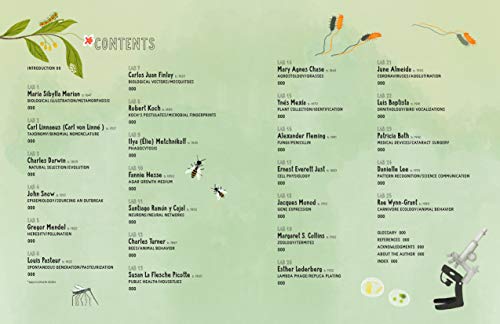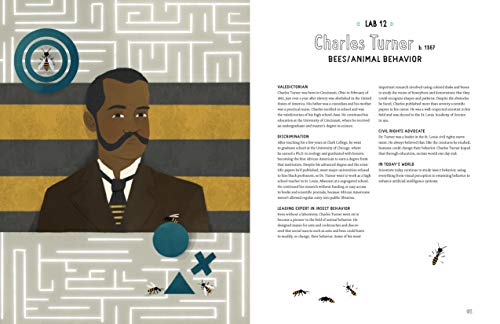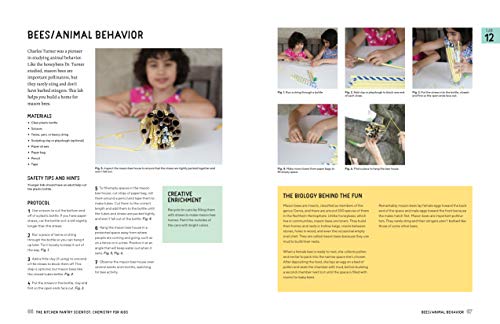




The Kitchen Pantry Scientist Biology for Kids: Science Experiments and Activities Inspired by Awesome Biologists, Past and Present; with 25 ... (Volume 2) (The Kitchen Pantry Scientist, 2)
E**A
Homeschool science: SIMPLIFIED
So far we have only done 2 chapters. But as a homeschool teachermom who has done other, far more complicated, teacher-intensive science with my kids.... this is where it's at. It is simple. They do their own journaling. We talk history and science at the same time. YES. My kids are grades 3 and 6. We do this together 2 or 3x/ week.
M**Y
Colorful & Captivating! GREAT Book of Useful Scientific Knowledge Explained For Kids (Or Anyone)
Biology for Kids is just what I needed for the summertime to keep my kids curious, exploring, and having fun. This book is perfect for my 8-year-old (going to 3rd grade). It contains a lot of topics that she is curious about. She is watching the caterpillars in our backyard grow and turn into butterflies. Now she can read all about metamorphosis. She is constantly finding insects and creatures in our yard and neighborhood and asking me which might be related because they move a similar way, make similar sounds, look similar, etc. Now she can learn all about taxonomy and binomial nomenclature. She is very aware that we are still in the midst of the pandemic and that we need to wear masks and wash hands to prevent spreading disease. Now she can read about epidemiology and outbreaks as well as coronaviruses. This book is just so relevant to all the things she is seeing and wondering about. It is easy for her to read, understand, and follow along. There are plenty of colorful photos and illustrations to captivate. What a great resource!In addition, each scientific topic is enhanced by a biography of the scientist credited to its discovery, advancement, or popularization. And with each topic, there are ideas for added enrichment/labs/activities to gain firsthand learning experience. Most of the supplies are items that can be found in most households. We loved the one with water salinity and floating eggs (container, water, salt, egg).Here is a list of topics covered in this book: Biological Illustration & Metamorphosis, Taxonomy & Binomial Nomenclature, Natural Selection & Evolution, Epidemiology & Outbreak, Heredity & Pollination, Pasteurization, Biological Vectors & Mosquitoes, Microbial Fingerprints, Phagocytosis, Agar Growth Medium, Neurons & Neural Network, Bees & Animal Behavior, Public Health & Houseflies, Agrostology, Plant Collection & Identification, Fungi & Penicillin, Cell Physiology, Gene Expression, Zoology, Lambda Phage, Conoraviruses, Ornithology & Bird Vocalization, Medial Devices & Surgery, Pattern Recognition, Carnivore Ecology.There is a lot but I love how it is broken down for young readers so that is digestible and easy to understand. This book is sure to take my child's understanding, appreciation, application of science to the next level.
J**0
Nothing to do with Kitchen Pantry - just a great book highlighting scientists from around the world
As a homeschool mom to 4, who loves science, I like this book. It's pretty unique and interesting. It's ideal for elementary aged students and would make for a neat semester long coop class, spending one class per chapter (there are 25 chapters so there's more than enough material to pick and choose from).Right off that bat, though, I have two minor issues:1 - the title on Amazon suggests that this is a Kitchen Pantry book while the title in real life suggests this is just from the author known as "The Kitchen Pantry Scientist." There's nothing in this book that has anything to do with the kitchen or pantry. Expect the kitchen table is a great place to do the experiments together. I feel like the book is well titled but Amazon's listing mis-represents it.2 - the first thing I noticed when I opened the book is that the book is dedicated to women of color in science and medicine. And yet there's a cartoon white woman most prominently on the cover (the Kitchen Pantry Scientist logo). However, the book redeems itself by highlighting a number of women from very different racial backgrounds.Each chapter highlights a man or woman in science, or medicine. There are 25 chapters/25 people. Of those I only recognized 3. I love that I get to learn about new people with my kids. Of the 25 people, 11 are women. And few of the women are Caucasian. In fact, based on the drawings (there are no photographs), one would think none of the women were Caucasian. There's a very very short bio for most people, but not all. So we googled many of the people to learn more about them as humans, instead of just what they accomplished in science. That's when I realized that one woman, drawn as multiracial in the picture, is Scottish. Another Jewish. There are also American Indian, Mexican, and quite a few African American women. As a woman with a very varied genetic history, I recognize the need for our girls to see women in science succeeding and especially to see women that look like them. So bravo for this book doing that to a point.Each chapter highlights a person and their research in one area. This is just one page, with the opposite page being a full color illustration of the person. The next 2-4 pages is an experiment or model you can build with kids. Most of these require just things you have at home. A few need something you likely don't have, like agar, a syringe (ask a pharmacist, they may give you one free!), sculpting clay, grass seeds, veggie/flower seeds. All those those things are fairly easy and inexpensive to get.The experiments and models are best for elementary aged kids. Middle schoolers will like some of them, and preschoolers can do some of them.Over all, I think it's a great book. But the "Kitchen Pantry Scientist" part of the title throws me for a loop because it has nothing to do with the kitchen or pantry. These experiments and models can be made anywhere.
Trustpilot
3 weeks ago
1 day ago